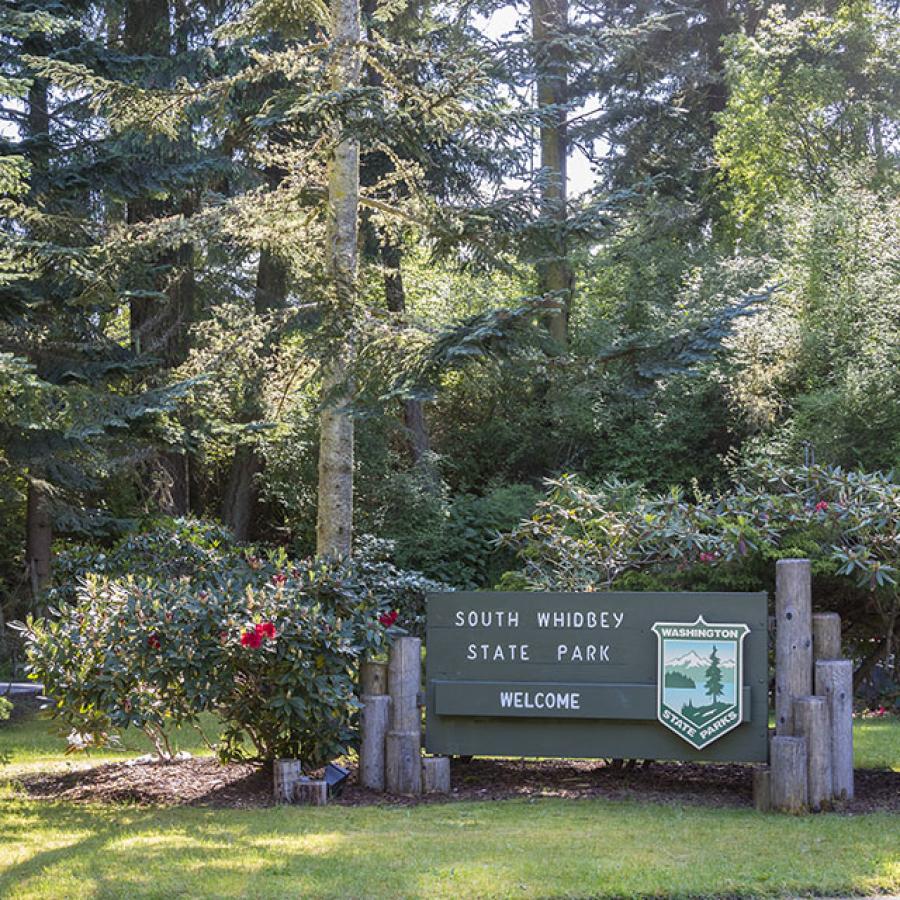
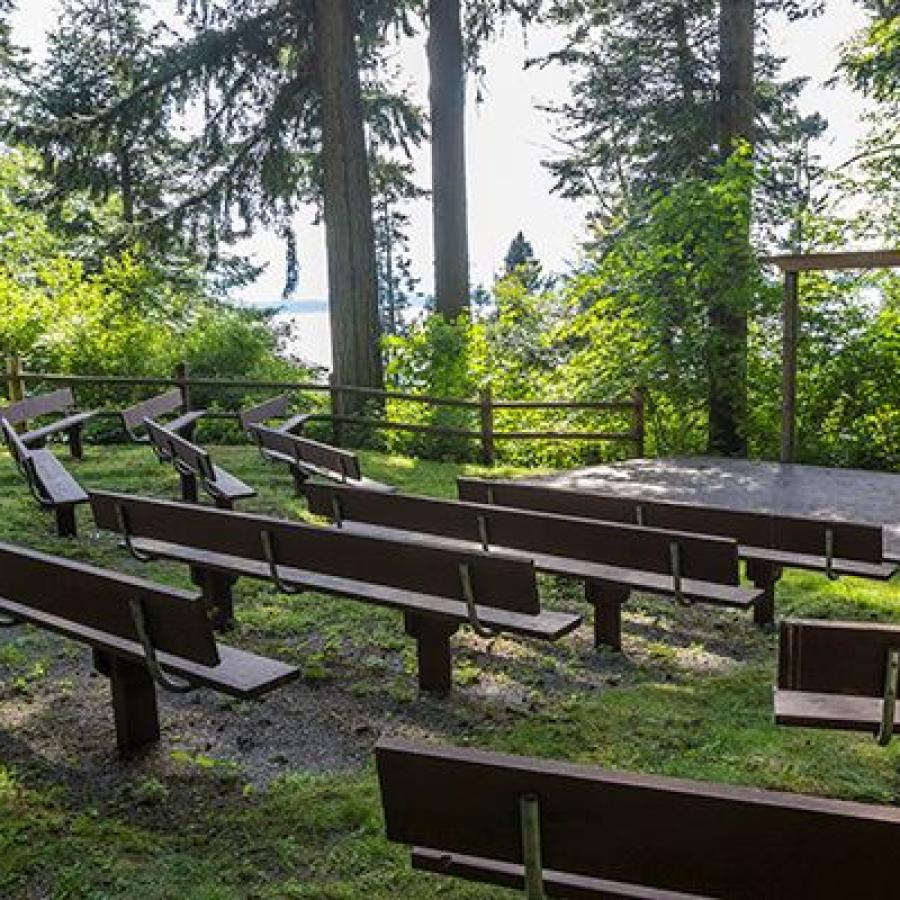
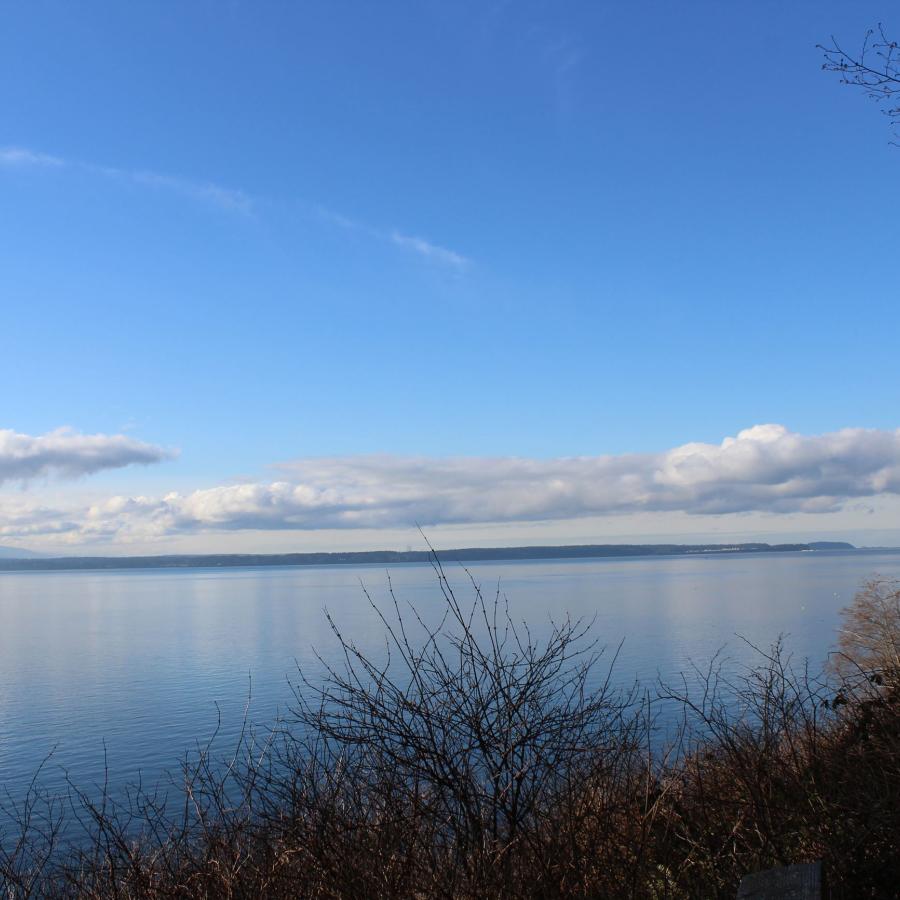
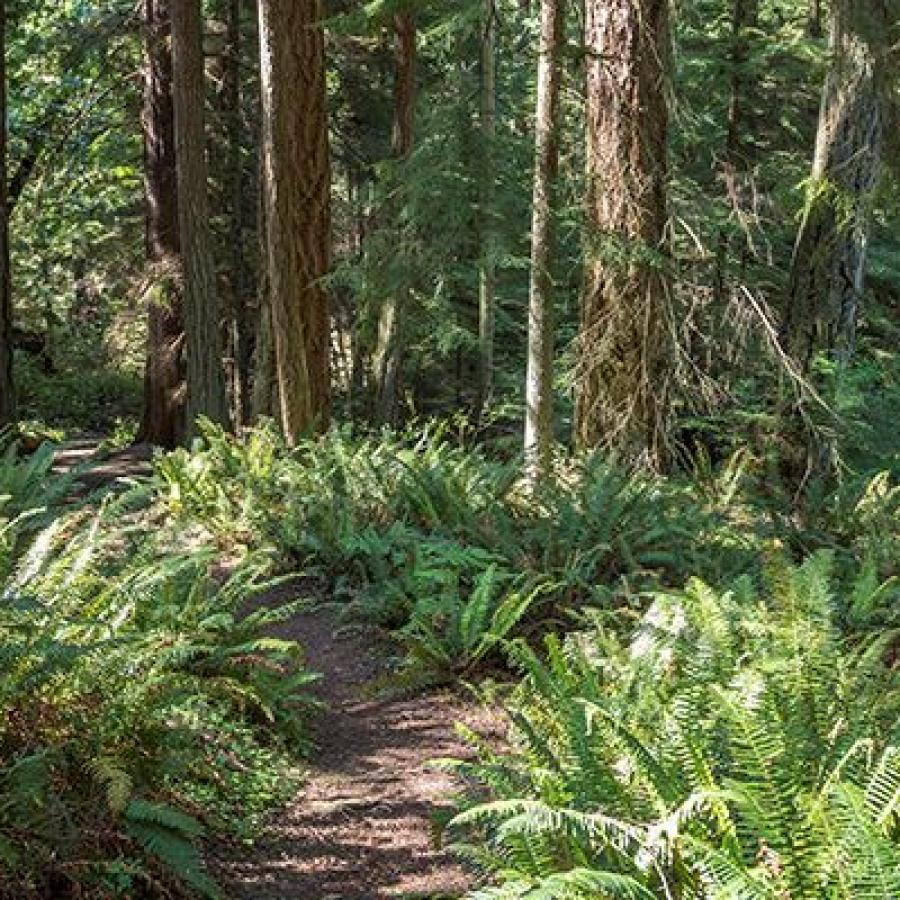
Fires allowed in all designated fire pits and grills. Propane and gas grills allowed.
Trail Closure Notice- Wilbert Trail
A portion of the Wilbert Trail is temporarily closed due to bridge maintenance. Please use alternate routes on Fern Gully Trail or Ridge Loop Trail.
We apologize for any inconvenience this may cause and thank you for your patience.
Please contact the park office at (360) 678-4519 or email South.Whidbey@parks.wa.gov with any questions or concerns.

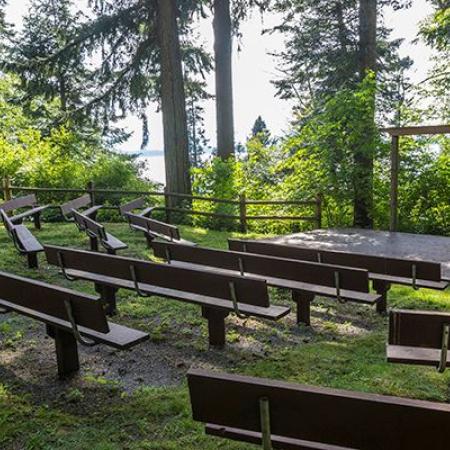
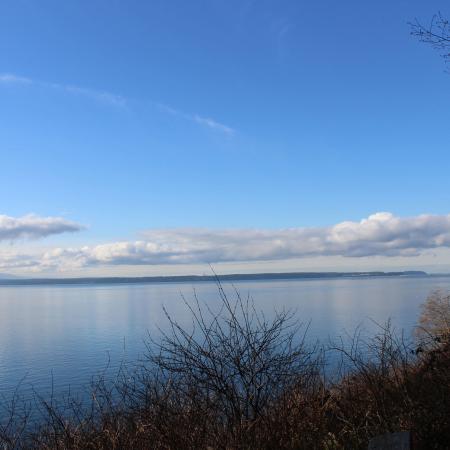
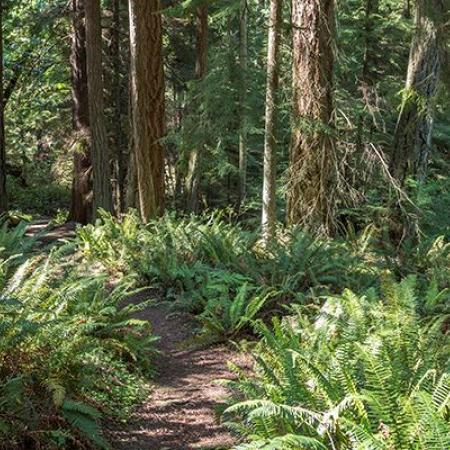
4128 S Smugglers Cove Road, Freeland, WA 98249
Walk in an old-growth forest filled with lush undergrowth and western views of Admiralty Inlet. Stop in to stretch your legs, hike and picnic or gather with family and friends at the amphitheater surrounded by majestic trees.
U.S. Navy jets from the nearby naval station may fly over the park at any time on training missions and create noisy conditions during your visit.
Request a special activity permit if your wedding, group activity or event includes 25 people or more. Call the park at (360) 678-4519 or email centralwhidbey.permits@parks.wa.gov.
Metal detecting is allowed in designated areas of the park. You must register to do this activity. Visit the Metal Detecting webpage for more information.
Bird Watching
First Day Hike Events
Hiking, Walking, Rolling and Running
Metal Detecting
Automated Pay Station
Accessible Restrooms
Drinking Water
Restrooms
Trash Service
Grill
Picnic Shelters
Picnic Tables
Accessible Parking
Parking
Trailer Dump
Amphitheater
Interpretive Opportunities
Hiking Trails
Forest
Mountain View
Seasonal Wildflowers
Viewpoint
Wildlife Viewing
U.S. Navy jets from the nearby naval station may fly over the park at any time on training missions and create noisy conditions during your visit.
Request a special activity permit if your wedding, group activity or event includes 25 people or more. Call the park at (360) 678-4519 or email centralwhidbey.permits@parks.wa.gov.
Metal detecting is allowed in designated areas of the park. You must register to do this activity. Visit the Metal Detecting webpage for more information.
There are a variety of options and settings at the park to gather with family and friends.
Learn about seasonal closures and operational changes during the off-season on the Winter Schedule page.
There is a reservable picnic shelter and amphitheater. The shelter has four picnic tables, a BBQ and accommodates up to 50 people. The amphitheater can accommodate up to 75 people. It has a stage, benches, three picnic tables and power. Both are a short walk from the back parking lot and there is potable water and restrooms nearby.
Walk or bike the road in the old campground to a picnic shelter in a serene setting. You can easily access additional picnic tables in an open field when entering the park.
Wander the trails filled with Douglas fir, western red cedar and big leaf maple trees. The park has trails on both sides of Smuggler’s Cove Road. Shorter hikes on the west side of the park are perfect for families with kids or pets. Try out the Earth Warrior Course built by local students on the Hobbit Trail. For longer hikes head to the east side of the park. Here you will find the Ancient Cedar at the beginning of Wilbert Trail.
Learn about this floating forest and its unique ecosystem through interpretive hikes and field trips. For more information email the park at CentralWhidbeyInterpretation@parks.wa.gov.